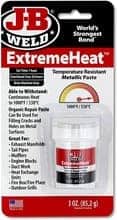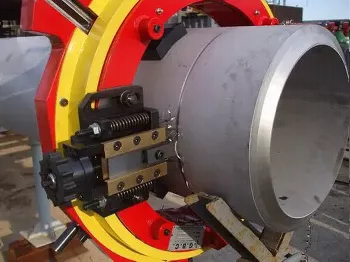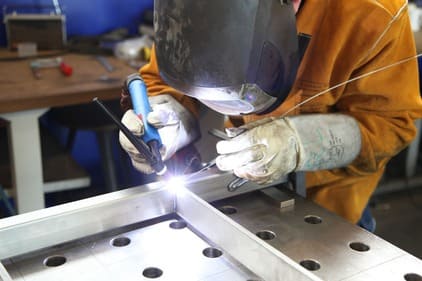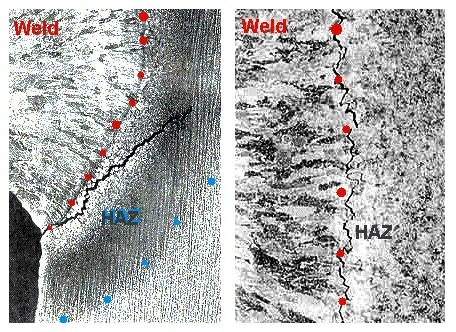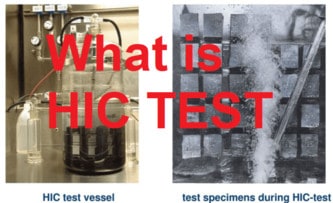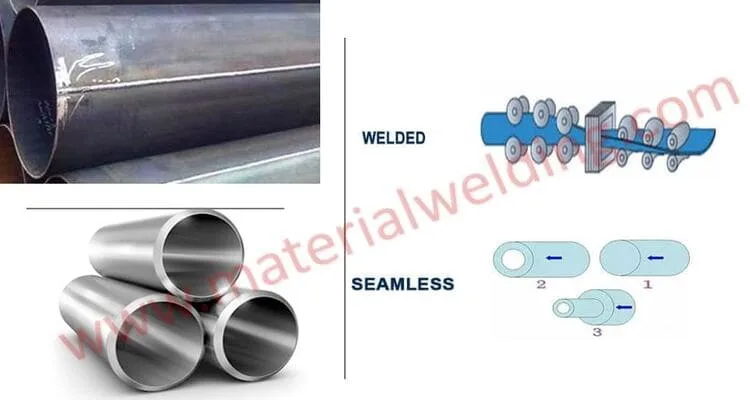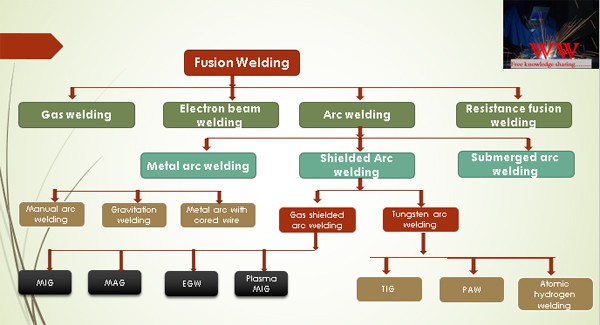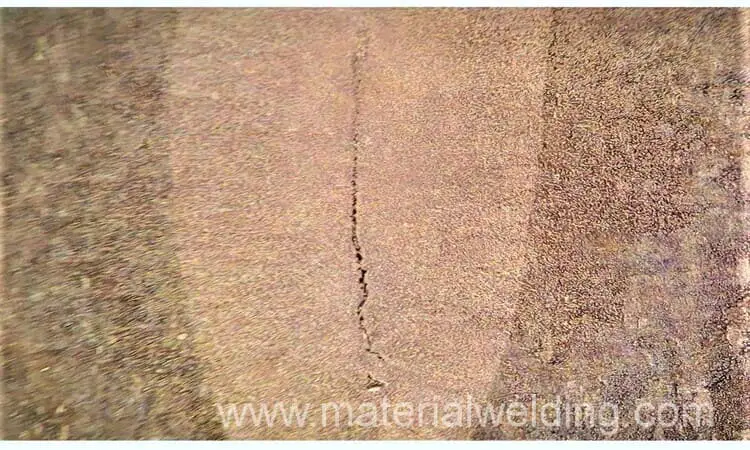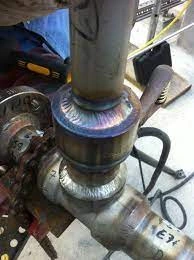What is Cold Welding Process?
There are different types of welding processes using varied technologies to produce weld joint by the applications of heat, pressure, or both heat & pressure, one of which is called Cold Welding.
Cold welding is a solid state welding process that does not involve melting of metals. The two metal parts are joined together by pressing them together at high pressure.
This is done by using a press to apply pressure to the two metals, which causes them to fuse together. Cold welding is often used for repairs, as it is a quick and easy way to fix a broken piece of metal.
The two pieces of metal are placed in close contact with each other and pressure is applied. This pressure causes the two metals to fuse together. This occurs when the surfaces of the two pieces are perfectly smooth and flush with each other. The metal will then join together as a result of the pressure that is applied, and no adhesive is necessary.
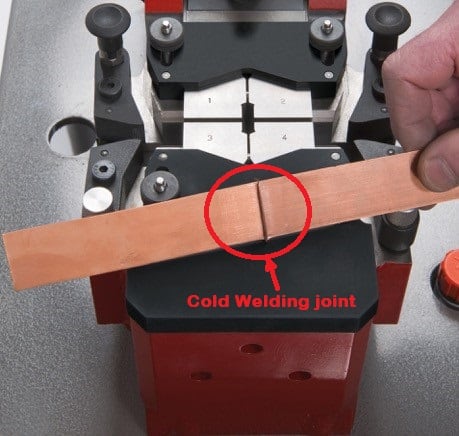
Remember, Friction Welding or seam welding processes, also uses Pressure but these welding process involves Heat, and thus discarded as Cold Welding Processes.
How Cold Welding works?
As per law of bonding, when two parts have atomic closeness and perfect cleanliness (Free from any foreign material), it will result in mutual atomic bonding. This is ideal condition.
Practically, it is not possible to have atomic closeness even we have a perfectly polished surface as atom size is very minute.
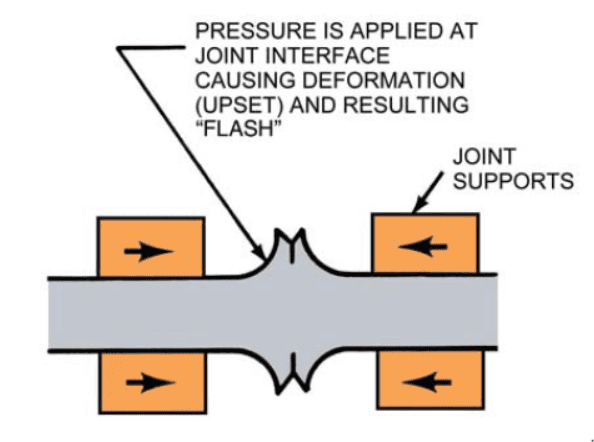
So, to create a joint using cold welding, first the parts are cleaned from any oxide layer or impurities presents on the material surface to achieve the cleanliness.
Next, pressure is applied to create the atomic closeness and the formation of the metallurgical bonds between the parts.
As, there is no heat involved during the Cold Welding Process, it is called Cold Welding.
Is Cold Welding better than Fusion Welding?
First, Let be clear that Cold Welding is a Special Welding Process and has its unique welding application.
You might wonder if cold welding is better than fusion welding. The answer is, it depends on the application. Cold welding is a process that uses pressure to fuse two surfaces together without heat. It is often used for smaller parts because it produces less heat than fusion welding and therefore causes less damage to the parts being welded.
However, cold welding is not as strong as fusion welding, so it is not recommended for larger parts. Also, to weld large parts, you need a very high pressure and thus a large equipment setup.
Fusion welding uses heat to fuse two surfaces together, resulting in a stronger weld. It is often used for larger parts because it can handle more weight. However, fusion welding can cause more damage to the parts being welded than cold welding.
In the end, it is up to the engineers to decide which process is best for the job at hand.
Cold Welding vs TIG Welding
Cold welding and TIG welding are two different types of welding. They have different results, and are used for different things.
Cold welding is a type of welding where the two pieces being welded are pressed together without any heat. This is a very strong weld, and is often used to weld metal together that is too thin to be welded with other methods.
TIG welding is a type of welding that uses heat to join the two pieces being welded together. in TIG welding heat is involved to join two parts without any pressure. TIG welding is often used to weld thin pieces of metal together, as it produces a very clean and precise weld.
Cold Welding is a Automatic welding process while TIG Welding is a manual welding process. TIG can be used to weld any shape of material while cold welding is limited to specific material shape joining only.
What is Cold Welding used for (Cold Welding Applications)?
There are several applications for cold welding:
- Welding of wires – When two wires need to be joined, they can be cold welded together. This is often done with electrical wiring.
- Joining dissimilar metals – When two different types of metal need to be joined, cold welding is a good option.
- Repairing broken parts – Broken parts can often be repaired using the cold welding process.
- Cold welding is also used in the aerospace industry to join parts together. It is especially useful for joining parts made from different materials.
- Another common application is in the automobile industry.
Cold Welding Benefits or Advantages
Cold welding is a process by which two metal surfaces are joined without the use of heat. The surfaces to be welded are placed in close contact and a pressure is applied. This pressure causes the metals to fuse together. The benefits of cold welding are:
- The Cold Welding joints are free from Heat Affected Zone (HAZ) & its detrimental effects on the welding joint.
- The welding joints can be created to weld dissimilar materials which otherwise is not possible with usual fusion welding processes.
- No heat is needed, so there is no risk of damaging the surrounding material.
- Cold Welding Joints are very clean, without any spatters or heat tints.
- The welds are strong and durable.
- The process is environmentally friendly.
- The Cold welding is very beneficial to weld 2XXX & 7XXX Aluminum welding grades that is otherwise not possible to weld with other welding methods.
Cold Welding Disadvantages
There are several disadvantages to using the cold welding process:
- High material cleanliness is necessary for a successful bond. The surfaces to be joined must be free of contaminants, oils, and other debris.
- The process can only be used on ductile materials. Non-ductile materials will break apart when subjected to the forces of cold welding.
- Only regular shaped materials can be bonded using this method. Irregularly-shaped or curved surfaces cannot be joined using cold welding.
What is the Best Cold Weld?
All Cold Welding Equipment’s works on the same principle. You might come through many times people calling adhesive bonding as Cold Welding such as using Belzona, JB Weld, etc., to join materials.
These joining methods are also called as Cold Welding as non-standard term. Choosing, the best that will meets a customer requirements depends on the type of joint, material type, stress conditions at the repair area and type of media repaired part is subjected.
JB Weld is one of famous Cold Weld Repair (Adhesive Joining) kit that is readily available and can be used to join lot of material types.
Cold Welding Aluminum to Steel
When welding aluminum to steel, the two metals have different melting points. Therefore, a traditional welding process using heat is not possible. A cold welding process can be used to join the metals together without any heat.
Cold welding aluminum to steel is possible, but there are some things you need to know before you try it. First, the two metals must be very clean and free of any oils or contaminants. Second, the weld joint must be very tight with no gaps or air pockets. And third, you need a good Cold Machine setup.
If you can meet all these requirements, then cold welding is a good option for joining these two metals. There is no heat involved in the process, so the weld quality is usually very good.
Cold Welding- What is it & its History?
Cold welding is a joining process that uses intense pressure applied by dies and rollers to join two objects into one. As the name suggests, this technique does not rely on heat to change the state of the objects being joined – these substances remain in a solid state throughout the process. Not all metals are ideal candidates for cold welding due to the oxygen content in their outer layers, and even after prolonged brushing and cleaning, metals will not stick if one of them is non-malleable. Likewise, if the two joined parts are later exposed to an oxygen-rich environment or certain other reactive compounds, the cold weld will fail.
Cold welding was originally discovered by modern societies in the early 1940’s and considered a new phenomenon, but the process has actually been in existence for thousands of years. It has been found that two similar metals will bond in a vacuum as long as they have clean, flattened surfaces and a strong initial force can be applied. During the process, deformation occurs on 60 to 80% of the bonding surface, resulting in pure, clean metals coming into contact. A permanent bond then takes place at the atomic level, with welds much stronger than could be achieved by other means. Another advantage is that absolutely no intermediate materials are used as solder. So as long as no oxides form on the metal surface, it should last for decades.
Since the early days of discovery, researchers have shown that cold welding can be performed without excessive force. Similar results can be achieved by applying less pressure over a longer period of time. Another method is to increase the surface temperature of the two materials to be joined for a short time to accelerate the molecules.
Modern applications for cold welding are numerous, but it is still considered a situational process due to the above limitations. However, the technique makes it possible to work in many hostile environments that were previously impossible, such as welding underground pipelines carrying flammable gases. Another disadvantage is that it is very difficult to verify the integrity of the weld, especially with thicker metals, as the weld is quick and believed to be permanent
Conclusion
In conclusion, cold welding is a process that does not require heat and can be used to weld similar and dissimilar metals together. It is a good process for welding thin wire together and produces clean welds.
Cold welding is an interesting process that can be used to fix metal objects. It is important to be aware of the risks involved, however, so that you can take the necessary precautions. If you are interested in learning more about cold welding, there are plenty of resources available online. Thanks for reading!
